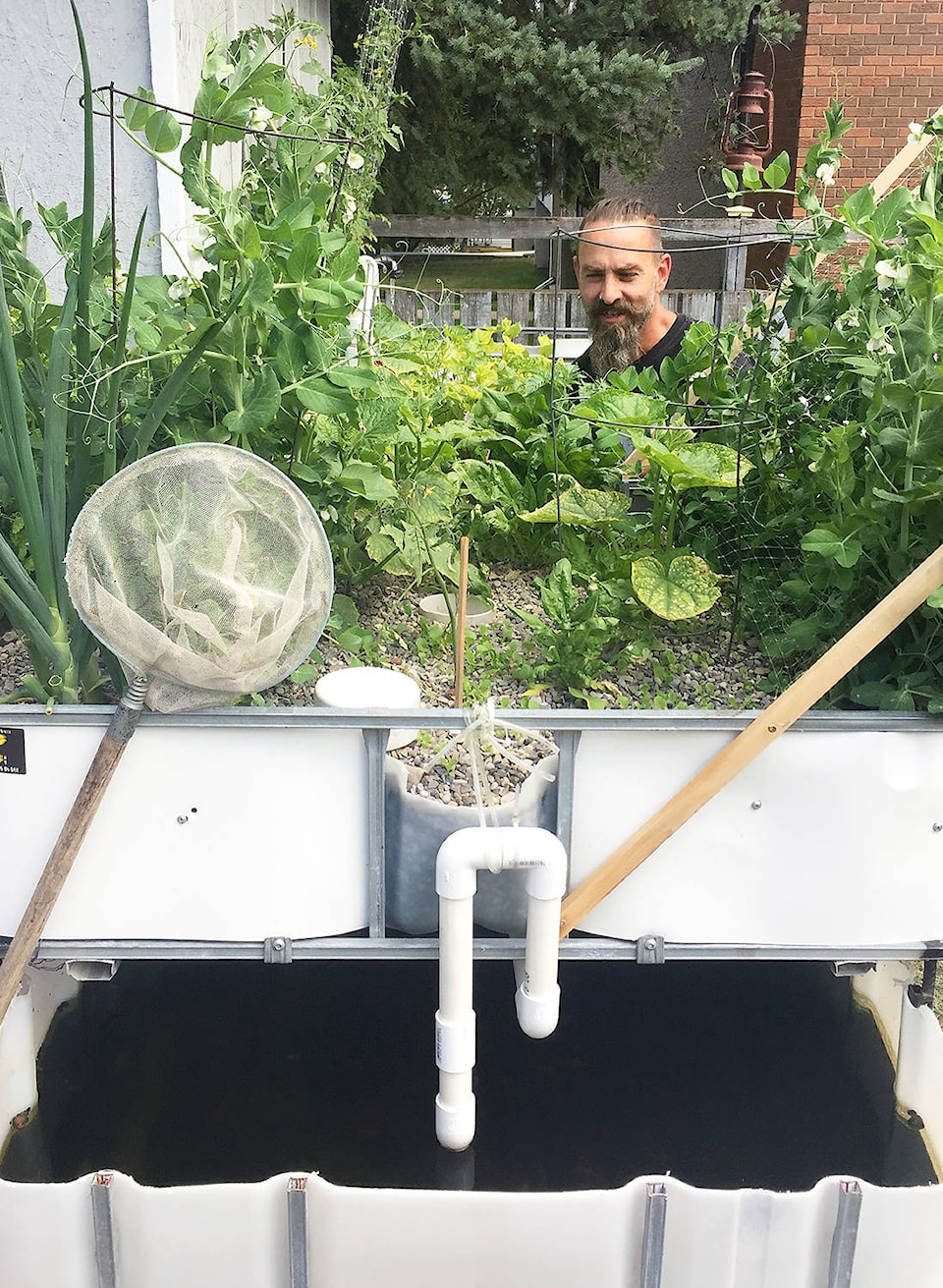A Ponoka resident is trying his hand at growing plants without soil.
Most schools in the Ponoka area have a hydro culture system that grows plants using water and light; Curtis Jacobson is taking it to a further level at home by adding fish.
Called aquaponics, the system uses hydro culture and the proteins from fish waste to help the plants grow. According to Wikipedia, the two systems create a symbiotic environment for both fish and plants.
For Jacobson, this project was something he and his son Ty could work on together for a home school project this spring. He says there are three different techniques involved in the aquaponics system:
• Deep water culture: “It’s growing the plants with the roots immersed in water,” explained Jacobson, adding that proper aeration is needed.
• Nutrient film technique: Water and nutrients are recirculated in the system and flow past the roots of plants in a shallow stream of water. This helps the plants with their growth.
• Ebb and flow: Roots grow into a gravel bed where the water fills and drains in cycles. This was the most difficult part of the project, explained Jacobson. “I got this all off of YouTube.”
For the ebb and flow portion of the system, Jacobson had to ensure the water drained and filled in proper volumes so that it didn’t over fill. Below the ebb and flow portion were 200 gold fish that he purchased from the pet store.
According to Wikipedia, the fish waste goes through a filtration process in the aquaponics system.
“Water from an aquaculture system is fed to a hydroponic system where the by-products are broken down by nitrifying bacteria initially into nitrites and subsequently into nitrates, which are utilized by the plants as nutrients, and the water is then recirculated back to the aquaculture system,” states Wikipedia.
Why goldfish? Jacobson said he would have preferred trout, but that requires a special permit.
Among the peas and cucumber and cantaloupe growing, Jacobson also has tomatoes, spinach, cilantro and a few other herbs and lettuce.
The whole point of the project was to be as self-sustaining as possible. Jacobson used melon seeds from a melon bought at the grocery store, a tomato clone from a nearby greenhouse, as well as onions and cilantro from the store.
The work requires knowledge of plants and some research into how aquaponics works, plus understanding pH balances said Jacobson. For him it’s worth the effort at having a self-sustaining project.
He’s got beets growing in the gravel.
The biggest challenge coming up will be transferring the tanks indoors. Jacobson says, in hindsight, if he had buried the aquaponics system it may have been easier to handle.
In the end, he hopes to give his son some hands on knowledge of plant biology as well as create a project that benefits the whole family with fresh fruit and vegetables year-round.
